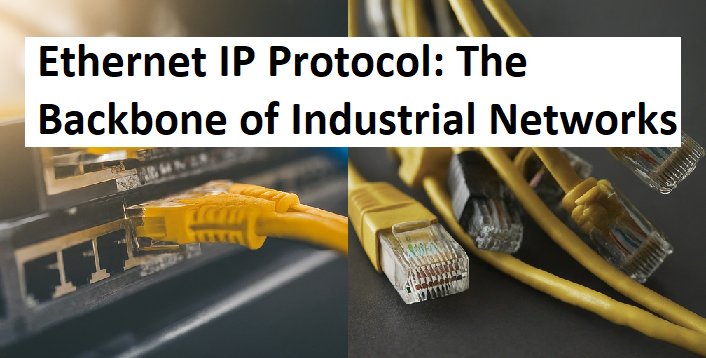Ethernet IP Protocol: The Backbone of Industrial Networks – Discover how Ethernet IP has revolutionized industrial automation by providing a flexible, scalable, and reliable communication platform for connecting a wide range of devices. Learn about its key features, benefits, and applications in various industries.

Understanding Ethernet IP
Ethernet IP (Industrial Protocol) is a specialized version of the standard Ethernet protocol designed specifically for industrial automation applications. It provides a reliable and efficient means of communication between various devices, such as programmable logic controllers (PLCs), human-machine interfaces (HMIs), sensors, actuators, and robots, within industrial environments.
Key Features of Ethernet IP
- Commonality: Ethernet IP leverages the familiar Ethernet physical layer, making it easy to integrate with existing IT infrastructure.
- Flexibility: It supports a wide range of communication services, including real-time data exchange, configuration, and diagnostics.
- Scalability: Ethernet IP can accommodate networks of varying sizes, from small, localized systems to large, distributed networks.
- Openness: It is an open standard, ensuring interoperability between devices from different manufacturers.
How Ethernet IP Works
- Physical Layer: Ethernet IP uses the same physical layer as standard Ethernet, such as twisted pair or fiber optic cables.
- Data Link Layer: This layer handles the framing and addressing of data packets. Ethernet IP uses the same MAC addresses as standard Ethernet.
- Network Layer: Ethernet IP uses the Internet Protocol (IP) to route data packets between different networks.
- Transport Layer: The transport layer ensures reliable delivery of data packets. Ethernet IP typically uses the Transmission Control Protocol (TCP) for reliable communication and the User Datagram Protocol (UDP) for time-sensitive applications.
- Application Layer: The application layer provides specific services for industrial automation, such as device profiles, data exchange, and configuration.
Benefits of Ethernet IP
- Reduced Costs: By leveraging existing Ethernet infrastructure, manufacturers can lower their overall costs.
- Increased Efficiency: Ethernet IP enables faster data transfer and more efficient communication between devices.
- Enhanced Flexibility: It allows for easy integration of new devices and systems into existing networks.
- Improved Reliability: Ethernet IP provides robust and reliable communication, even in harsh industrial environments.
Applications of Ethernet IP
- Factory Automation: Controlling production lines, assembly robots, and material handling systems.
- Building Automation: Managing HVAC systems, lighting, and security.
- Process Automation: Monitoring and controlling industrial processes, such as oil and gas refining.
- Machine Tools: Controlling CNC machines and other automated equipment.
Ethernet IP and Industrial Internet of Things (IIoT)
Ethernet IP plays a crucial role in enabling the Industrial Internet of Things (IIoT). It provides the connectivity and communication foundation for connecting industrial devices and systems to the internet, allowing for data-driven decision-making, remote monitoring, and predictive maintenance.
Conclusion
Ethernet IP has become the de facto standard for industrial communication. Its combination of flexibility, scalability, and reliability makes it a valuable tool for manufacturers seeking to improve efficiency, reduce costs, and enhance productivity. As the Industrial Internet of Things continues to evolve, Ethernet IP will remain a cornerstone of industrial automation.
Home | Join us on Facebook, Twitter, YouTube, Instagram, Quora, Reddit, LinkedIn, Pintereset, Blogger.